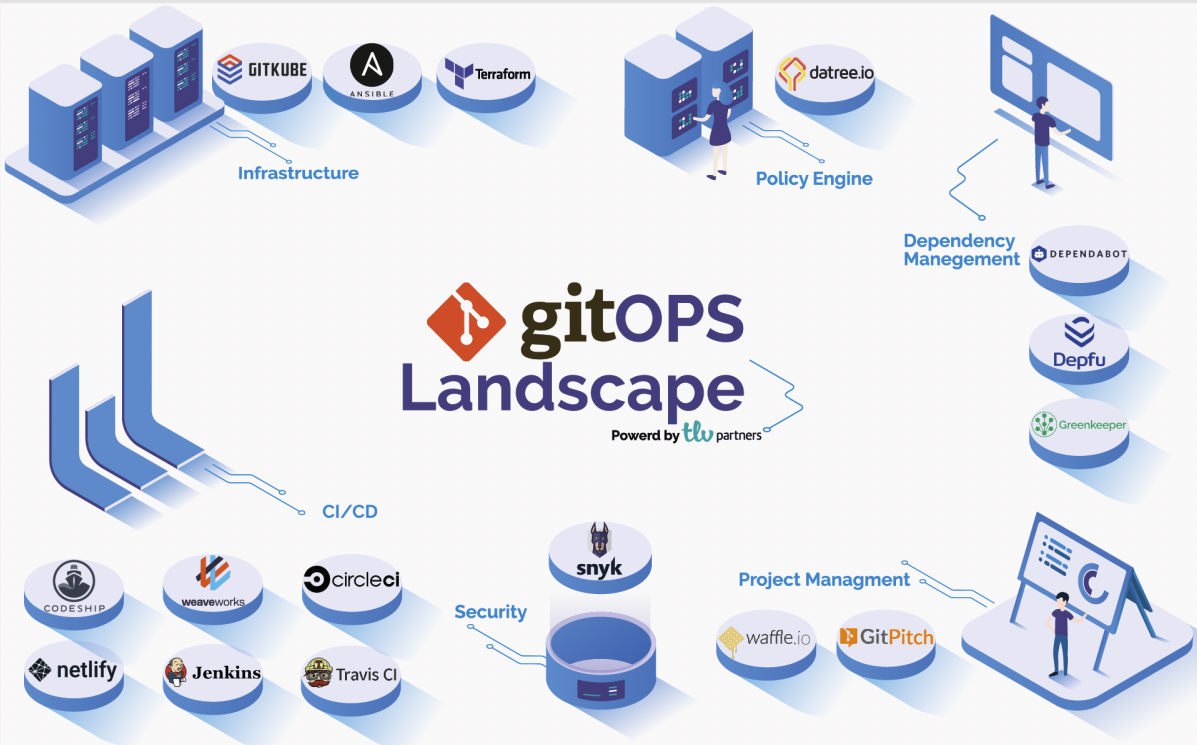
GitOps are trending in the software and tech space
Table of Contents
What is GitOps?
GitOps is an operational framework used for infrastructure automation.
In other words, GitOps applies the same best practices used in DevOps to infrastructure.
The reason for growing interest in the practice is that GitOps can lead to increased productivity, higher reliability, and better stability.
For example, a London-based financial services company saw a 50% increase in its production speed after implementing GitOps.

Key benefits of GitOps
There are a number of key benefits to GitOps, including:
Increased productivity
GitOps can lead to increased productivity as it automates many of the tasks that would otherwise be manual.
Higher reliability
GitOps can lead to higher reliability as it ensures that all changes to infrastructure are made through code and reviewed by humans before being deployed.
Better stability
GitOps can lead to better stability as it ensures that all changes are made through code and tested before being deployed to production.
How does GitOps work?
GitOps works by using a Git repository as the source of truth for all infrastructure changes.
All changes to infrastructure are made through code and reviewed by humans before being deployed.
This ensures that all changes are made through code and tested before being deployed to production.
GitOps is a great way to increase productivity, reliability, and stability.
If you’re looking for a way to automate your infrastructure, GitOps is worth considering.
IAC tools vs. GitOps
There are a number of tools available for infrastructure as code (IAC), including:
- Puppet
- Chef
- Ansible
- Terraform
GitOps can be used with any of these IAC tools.
However, GitOps is not limited to IAC tools.
GitOps can be used with any tool that can be used to manage infrastructure, such as:
- AWS CloudFormation
- Azure Resource Manager
- Google Cloud Deployment Manager
The key difference between GitOps and IAC is that GitOps uses a Git repository as the source of truth for all infrastructure changes.
In other words, GitOps treats code as if it were Infrastructure.
Changes to infrastructure are made through code and reviewed by humans before being deployed.
This ensures that all changes are made through code and tested before being deployed to production.
GitOps can be used with any tool that can be used to manage infrastructure.
IAC tools are just one type of tool that can be used with GitOps.
What’s next in the GitOps space
GitOps is part of the Infrastructure as Code (IaC) trend.
IaC refers to the process of manipulating infrastructure through code vs. manual intervention.
IaC is expected to grow at a similar CAGR as the entire DevOps market (22% through 2030).
The mainstreaming of cloud practices and the continued increase in adoption of DevSecOps are two main drivers of accelerating IaC growth.


![Backwards 3: How to Type "Ɛ" [EASY]](https://softwareblade.com/wp-content/uploads/2022/02/Screen-Shot-2022-02-19-at-9.03.25-PM-150x150.png)